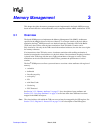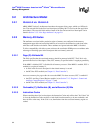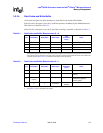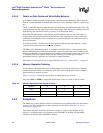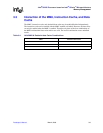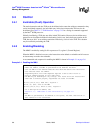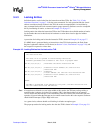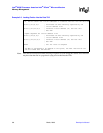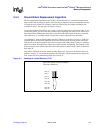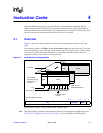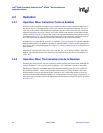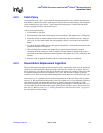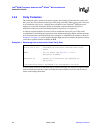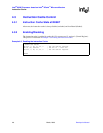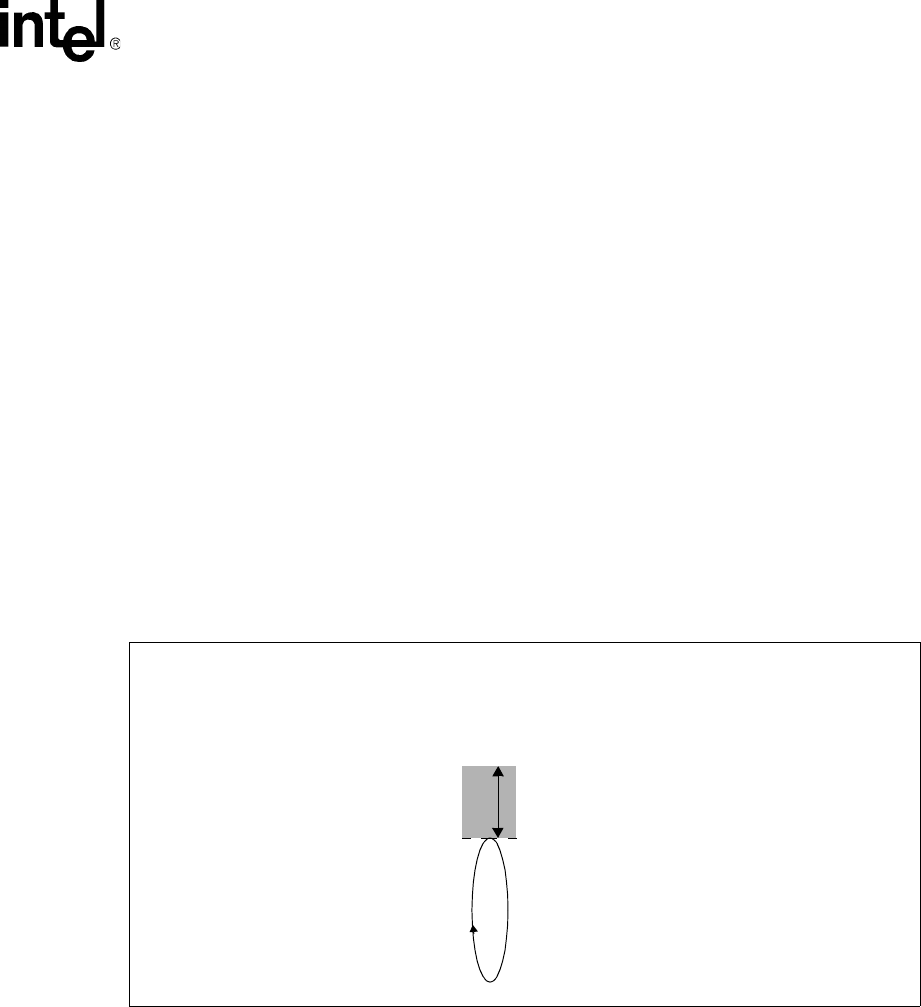
Developer’s Manual March, 2003 3-9
Intel
®
80200 Processor based on Intel
®
XScale
™
Microarchitecture
Memory Management
3.4.4 Round-Robin Replacement Algorithm
The line replacement algorithm for the TLBs is round-robin; there is a round-robin pointer that
keeps track of the next entry to replace. The next entry to replace is the one sequentially after the
last entry that was written. For example, if the last virtual to physical address translation was
written into entry 5, the next entry to replace is entry 6.
At reset, the round-robin pointer is set to entry 31. Once a translation is written into entry 31, the
round-robin pointer gets set to the next available entry, beginning with entry 0 if no entries have
been locked down. Subsequent translations move the round-robin pointer to the next sequential
entry until entry 31 is reached, where it wraps back to entry 0 upon the next translation.
A lock pointer is used for locking entries into the TLB and is set to entry 0 at reset. A TLB lock
operation places the specified translation at the entry designated by the lock pointer, moves the
lock pointer to the next sequential entry, and resets the round-robin pointer to entry 31. Locking
entries into either TLB effectively reduces the available entries for updating. For example, if the
first three entries were locked down, the round-robin pointer would be entry 3 after it rolled over
from entry 31.
Only entries 0 through 30 can be locked in either TLB; entry 31can never be locked. If the lock
pointer is at entry 31, a lock operation updates the TLB entry with the translation and ignore the
lock. In this case, the round-robin pointer stays at entry 31.
Figure 3-1. Example of Locked Entries in TLB
entry 0
entry 1
entry 7
entry 8
entry 22
entry 23
entry 30
entry 31
Locked
Eight entries locked, 24 entries available for
round robin replacement



